Abstract
Three experiments employing a five-choice button-pressing task tested the ability of Parkinsonian patients to learn and generate sequences of movement, and to switch between alternative sequences at will. It was found that patients could learn and generate individual patterns of movement normally, even complex ones involving an incompatible stimulus-response relationship. They had difficulty, however, in maintaining a sequence if two different ones had been learnt and subjects were required to switch spontaneously from one to the other within a trial. Providing external cues at the start of each sequence to guide the ordering of movements improved the stability of patients' performance. Most errors in sequencing consisted of reverting to the alternative pattern of movement. Parkinsonian subjects thus show an impairment in motor set similar to that found previously in cognitive activity.
Full text
PDF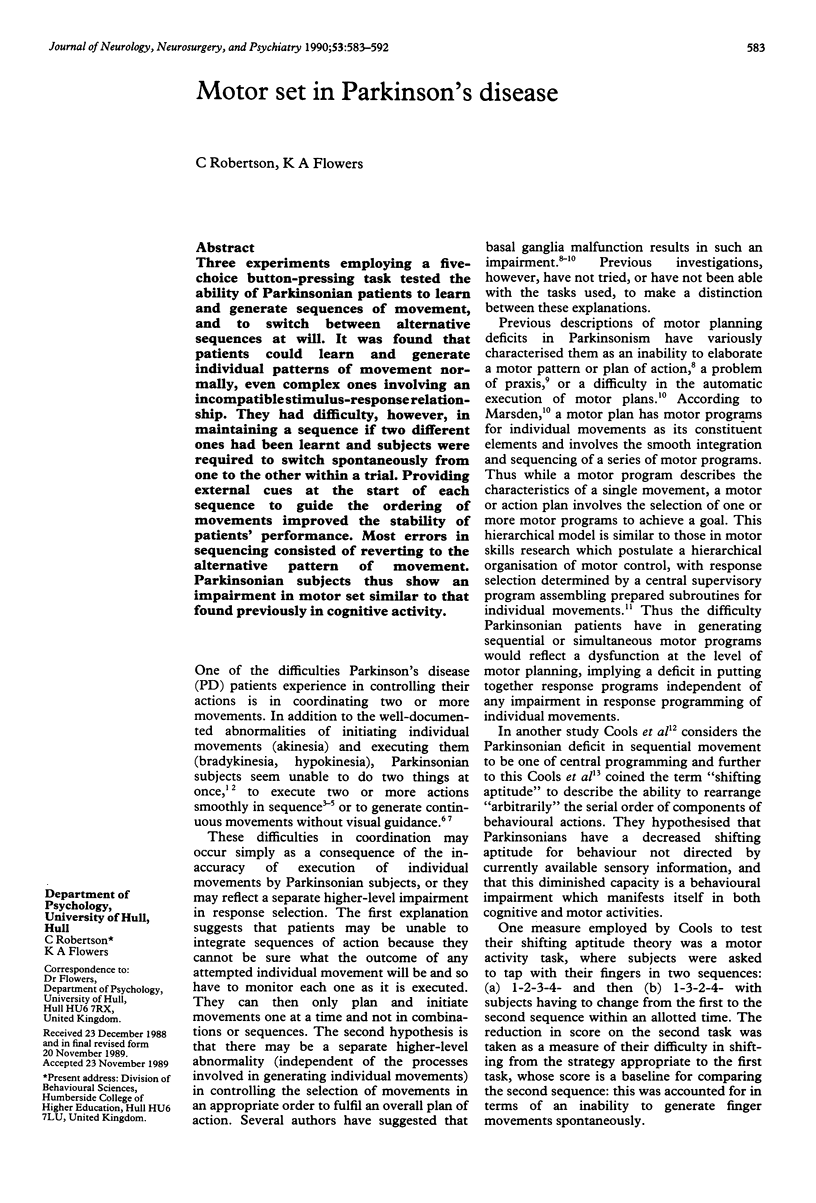
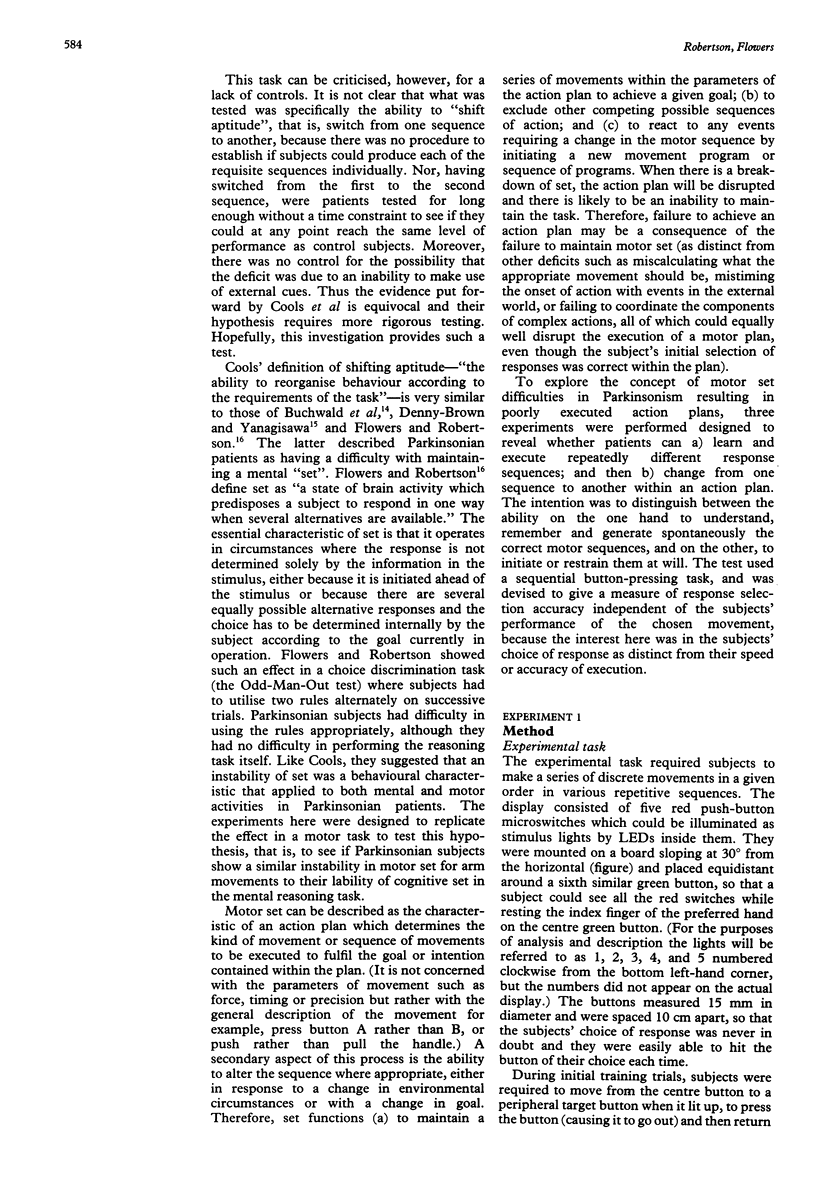
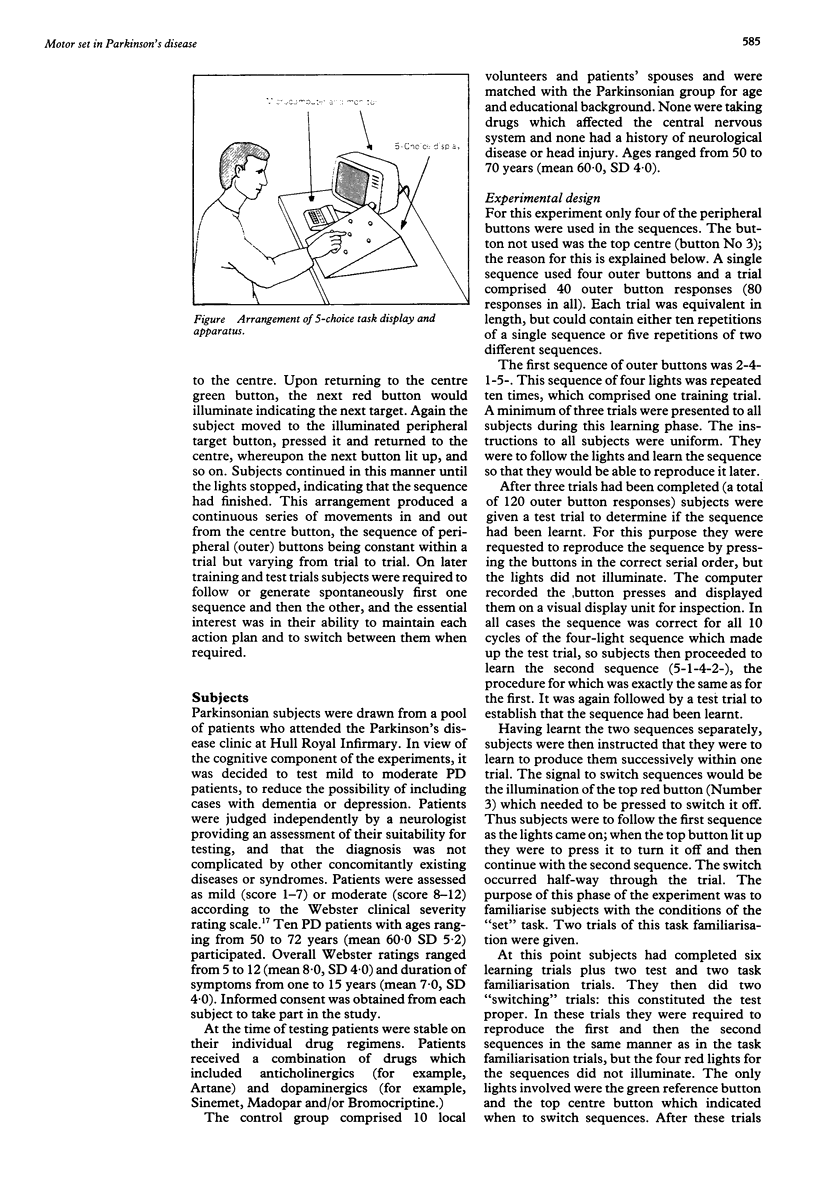
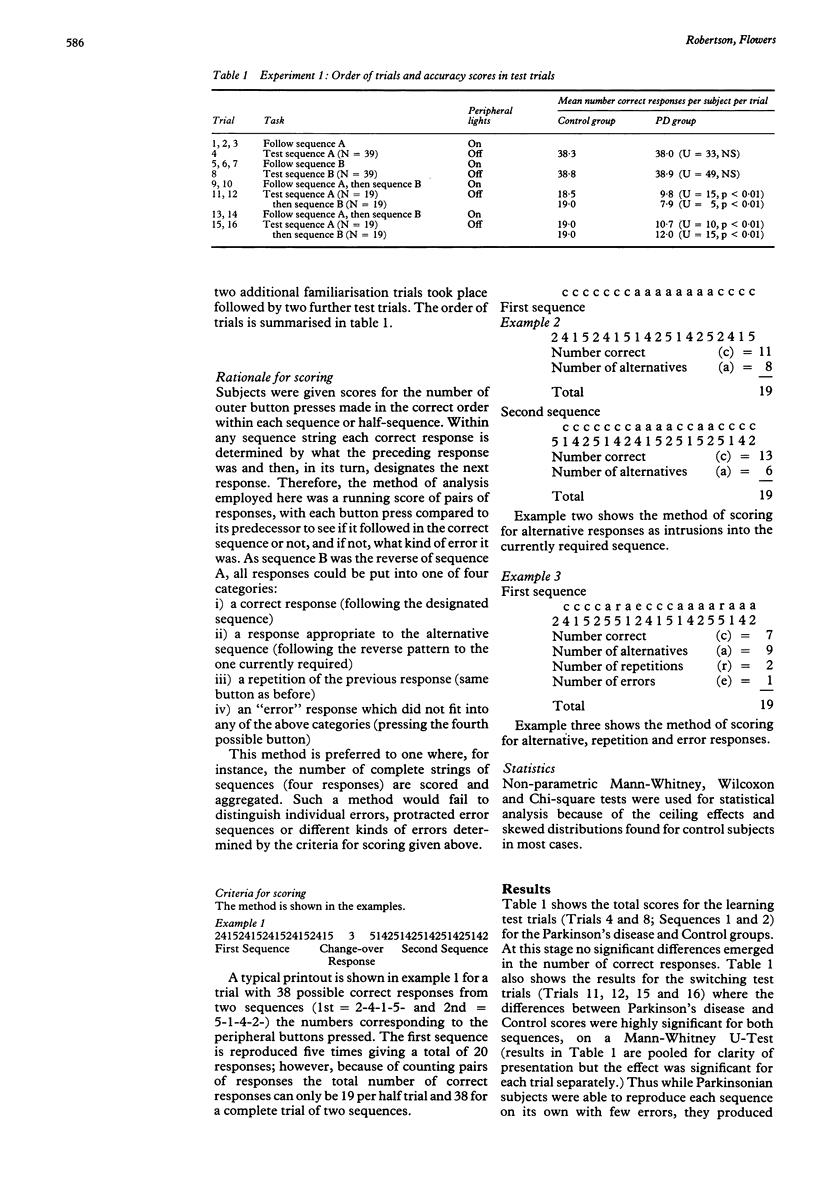
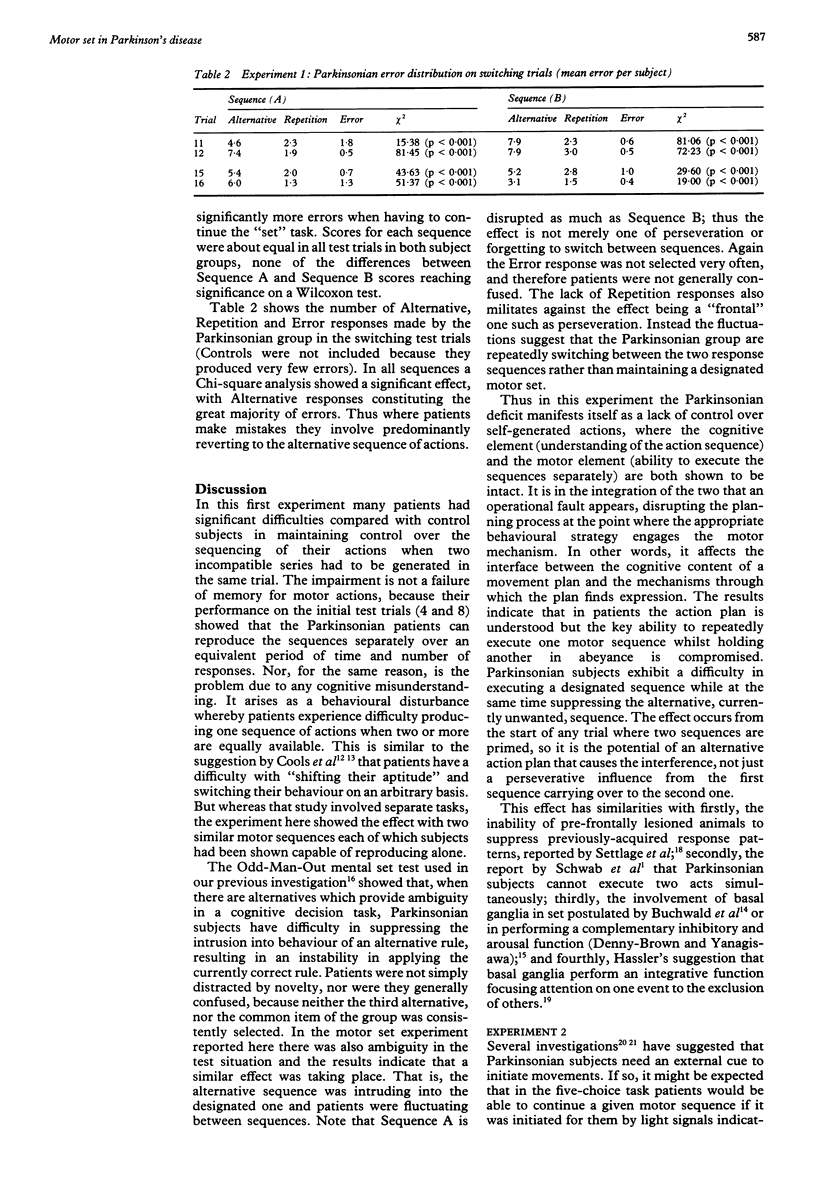
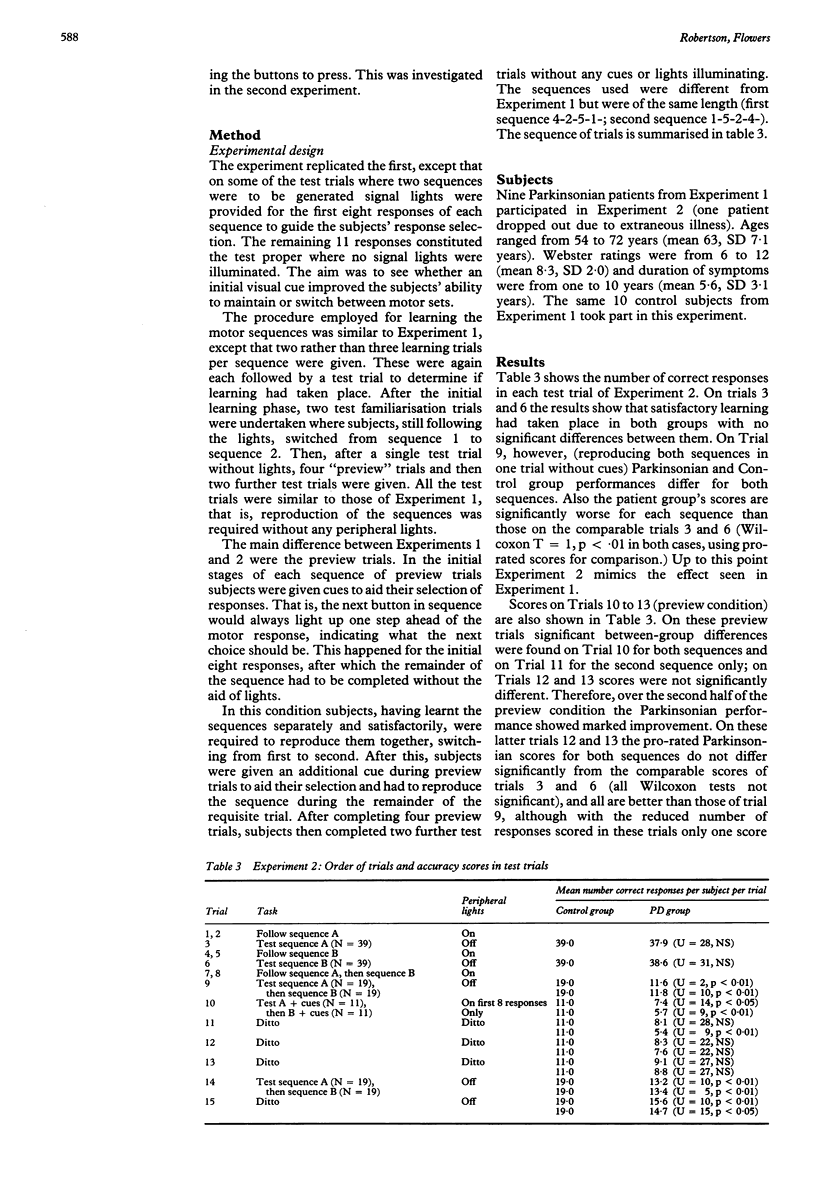
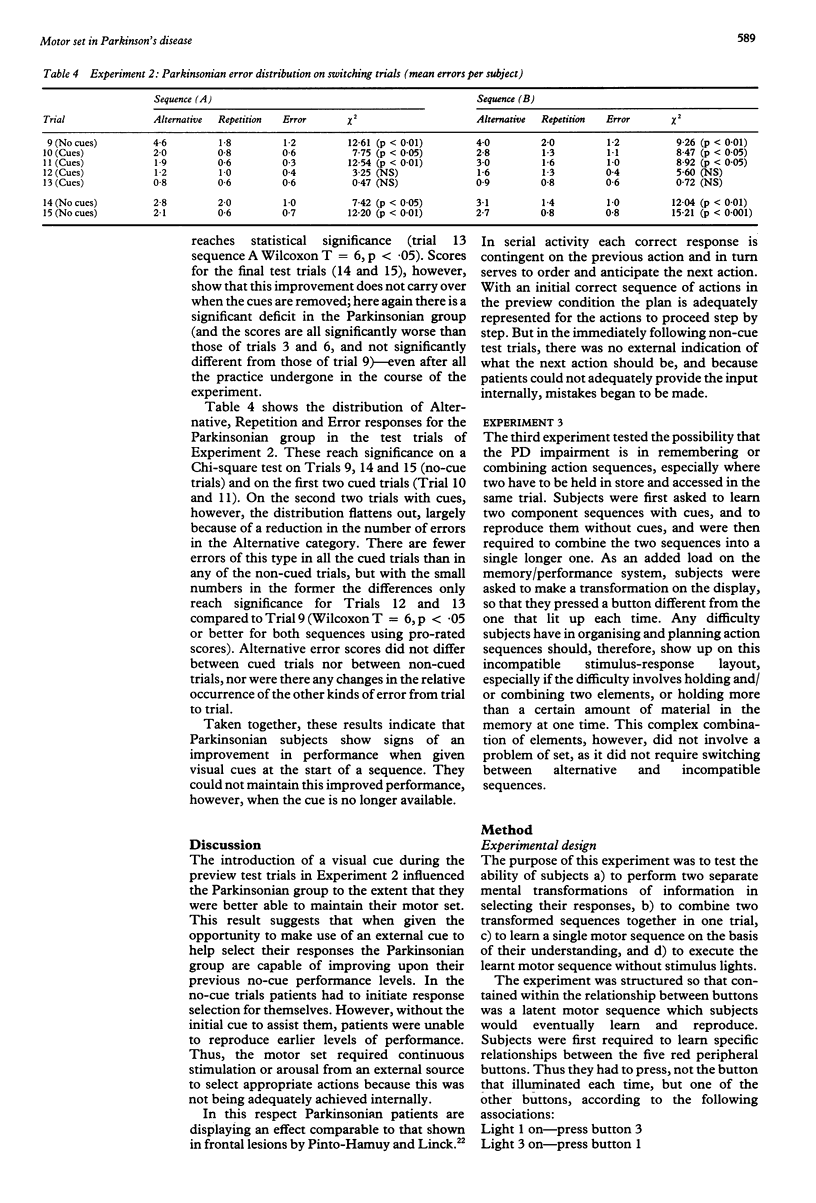
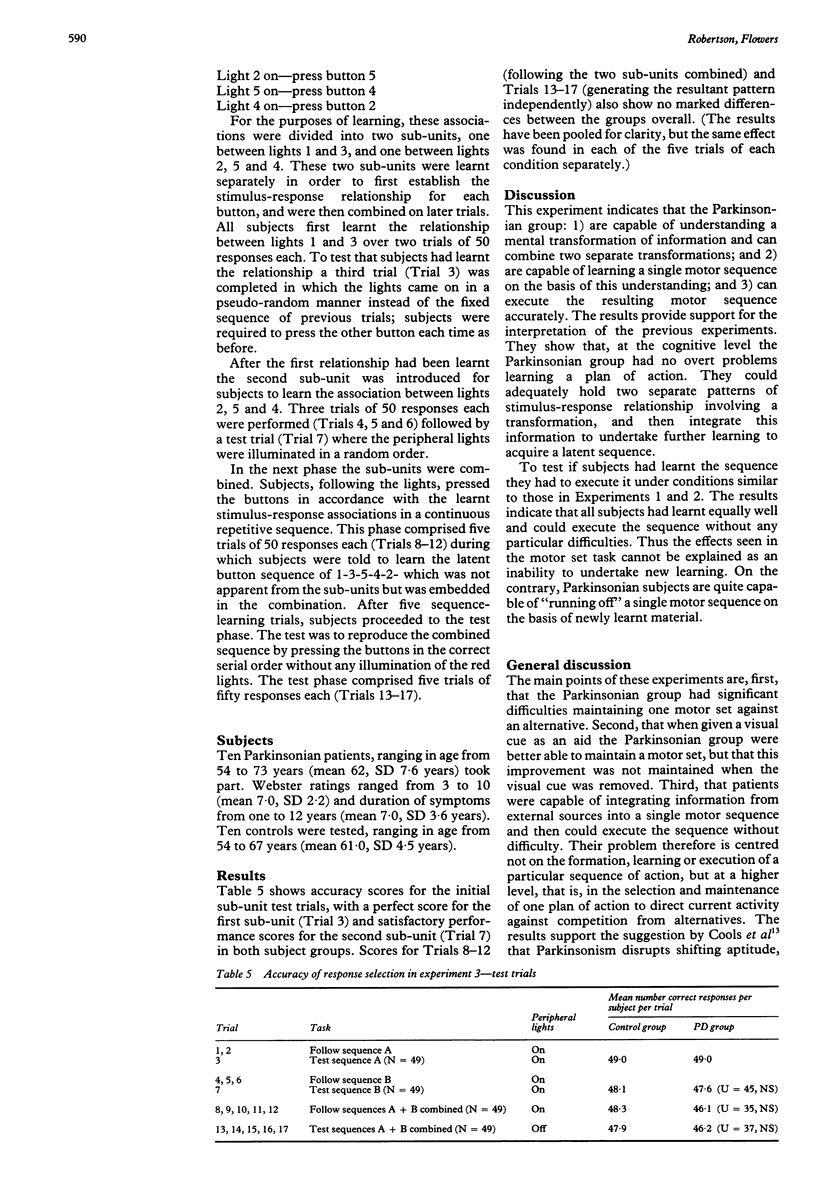
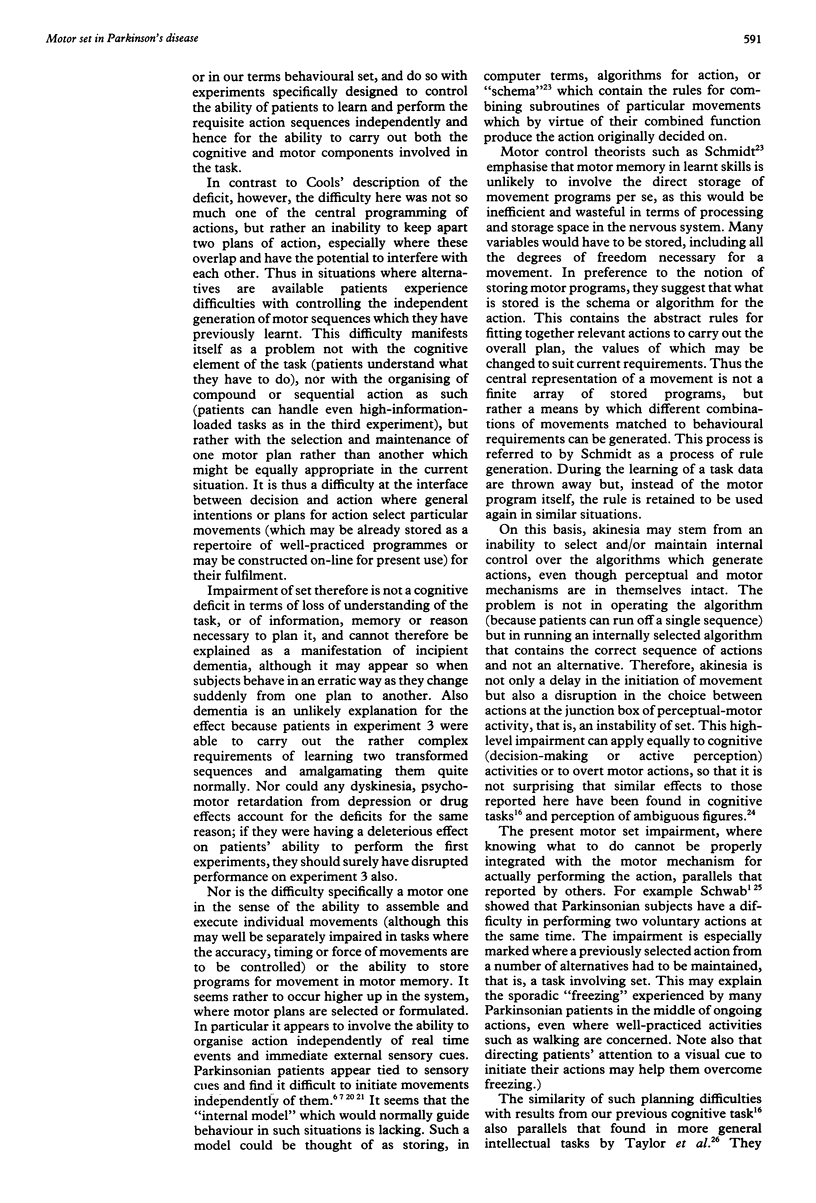
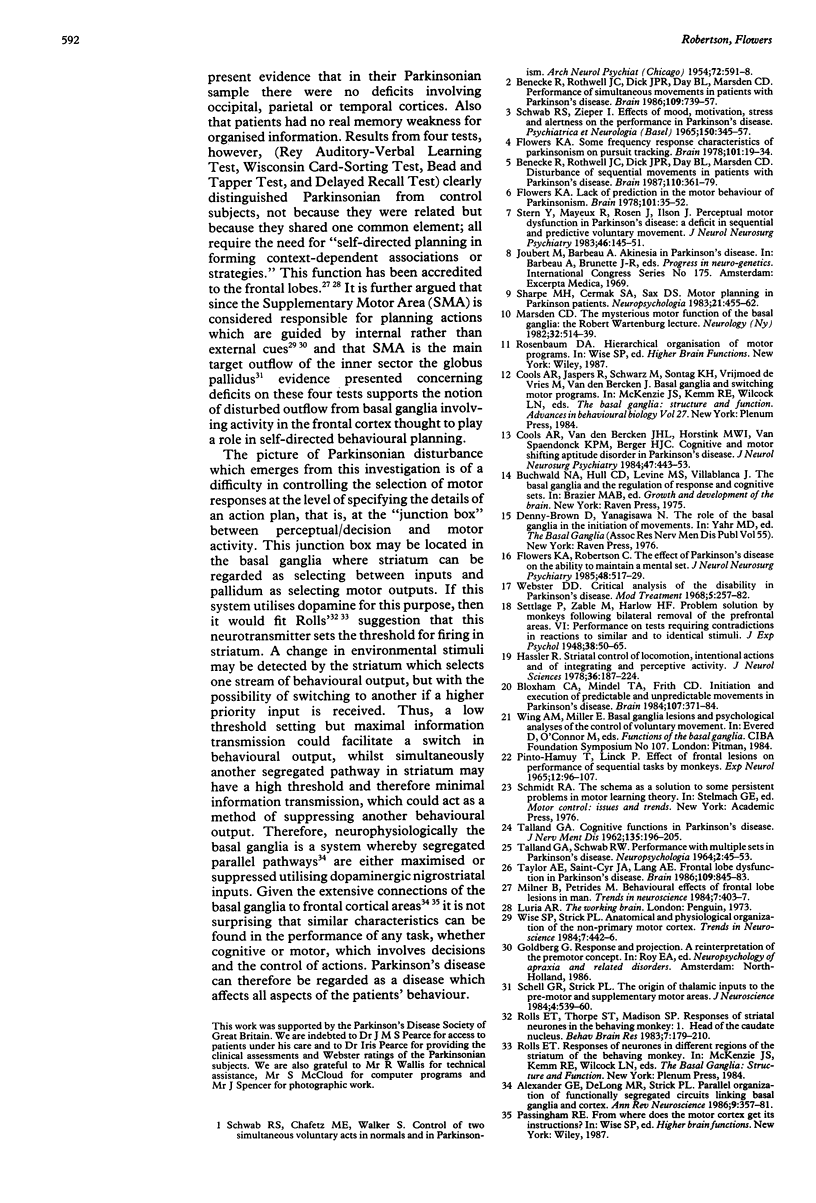
Images in this article
Selected References
These references are in PubMed. This may not be the complete list of references from this article.
- Alexander G. E., DeLong M. R., Strick P. L. Parallel organization of functionally segregated circuits linking basal ganglia and cortex. Annu Rev Neurosci. 1986;9:357–381. doi: 10.1146/annurev.ne.09.030186.002041. [DOI] [PubMed] [Google Scholar]
- Benecke R., Rothwell J. C., Dick J. P., Day B. L., Marsden C. D. Disturbance of sequential movements in patients with Parkinson's disease. Brain. 1987 Apr;110(Pt 2):361–379. doi: 10.1093/brain/110.2.361. [DOI] [PubMed] [Google Scholar]
- Benecke R., Rothwell J. C., Dick J. P., Day B. L., Marsden C. D. Performance of simultaneous movements in patients with Parkinson's disease. Brain. 1986 Aug;109(Pt 4):739–757. doi: 10.1093/brain/109.4.739. [DOI] [PubMed] [Google Scholar]
- Bloxham C. A., Mindel T. A., Frith C. D. Initiation and execution of predictable and unpredictable movements in Parkinson's disease. Brain. 1984 Jun;107(Pt 2):371–384. doi: 10.1093/brain/107.2.371. [DOI] [PubMed] [Google Scholar]
- Cools A. R., van den Bercken J. H., Horstink M. W., van Spaendonck K. P., Berger H. J. Cognitive and motor shifting aptitude disorder in Parkinson's disease. J Neurol Neurosurg Psychiatry. 1984 May;47(5):443–453. doi: 10.1136/jnnp.47.5.443. [DOI] [PMC free article] [PubMed] [Google Scholar]
- Flowers K. A., Robertson C. The effect of Parkinson's disease on the ability to maintain a mental set. J Neurol Neurosurg Psychiatry. 1985 Jun;48(6):517–529. doi: 10.1136/jnnp.48.6.517. [DOI] [PMC free article] [PubMed] [Google Scholar]
- Flowers K. Lack of prediction in the motor behaviour of Parkinsonism. Brain. 1978 Mar;101(1):35–52. doi: 10.1093/brain/101.1.35. [DOI] [PubMed] [Google Scholar]
- Flowers K. Some frequency response characteristics of Parkinsonism on pursuit tracking. Brain. 1978 Mar;101(1):19–34. doi: 10.1093/brain/101.1.19. [DOI] [PubMed] [Google Scholar]
- Hassler R. Striatal control of locomotion, intentional actions and of integrating and perceptive activity. J Neurol Sci. 1978 Apr;36(2):187–224. doi: 10.1016/0022-510x(78)90082-5. [DOI] [PubMed] [Google Scholar]
- PINTO-HAMUY T., LINCK P. EFFECT OF FRONTAL LESIONS ON PERFORMANCE OF SEQUENTIAL TASKS BY MONKEYS. Exp Neurol. 1965 May;12:96–107. doi: 10.1016/0014-4886(65)90101-9. [DOI] [PubMed] [Google Scholar]
- Rolls E. T., Thorpe S. J., Maddison S. P. Responses of striatal neurons in the behaving monkey. 1. Head of the caudate nucleus. Behav Brain Res. 1983 Feb;7(2):179–210. doi: 10.1016/0166-4328(83)90191-2. [DOI] [PubMed] [Google Scholar]
- SCHWAB R. S., CHAFETZ M. E., WALKER S. Control of two simultaneous voluntary motor acts in normals and in parkinsonism. AMA Arch Neurol Psychiatry. 1954 Nov;72(5):591–598. doi: 10.1001/archneurpsyc.1954.02330050061010. [DOI] [PubMed] [Google Scholar]
- Schell G. R., Strick P. L. The origin of thalamic inputs to the arcuate premotor and supplementary motor areas. J Neurosci. 1984 Feb;4(2):539–560. doi: 10.1523/JNEUROSCI.04-02-00539.1984. [DOI] [PMC free article] [PubMed] [Google Scholar]
- Schwab R. S., Zieper I. Effects of mood, motivation, stress and alertness on the performance in Parkinson's disease. Psychiatr Neurol (Basel) 1965;150(6):345–357. doi: 10.1159/000127780. [DOI] [PubMed] [Google Scholar]
- Sharpe M. H., Cermak S. A., Sax D. S. Motor planning in Parkinson patients. Neuropsychologia. 1983;21(5):455–462. doi: 10.1016/0028-3932(83)90002-7. [DOI] [PubMed] [Google Scholar]
- Stern Y., Mayeux R., Rosen J., Ilson J. Perceptual motor dysfunction in Parkinson's disease: a deficit in sequential and predictive voluntary movement. J Neurol Neurosurg Psychiatry. 1983 Feb;46(2):145–151. doi: 10.1136/jnnp.46.2.145. [DOI] [PMC free article] [PubMed] [Google Scholar]
- TALLAND G. A. Cognitive function in Parkinson's disease. J Nerv Ment Dis. 1962 Sep;135:196–205. [PubMed] [Google Scholar]
- Taylor A. E., Saint-Cyr J. A., Lang A. E. Frontal lobe dysfunction in Parkinson's disease. The cortical focus of neostriatal outflow. Brain. 1986 Oct;109(Pt 5):845–883. doi: 10.1093/brain/109.5.845. [DOI] [PubMed] [Google Scholar]
- Webster D. D. Critical analysis of the disability in Parkinson's disease. Mod Treat. 1968 Mar;5(2):257–282. [PubMed] [Google Scholar]



